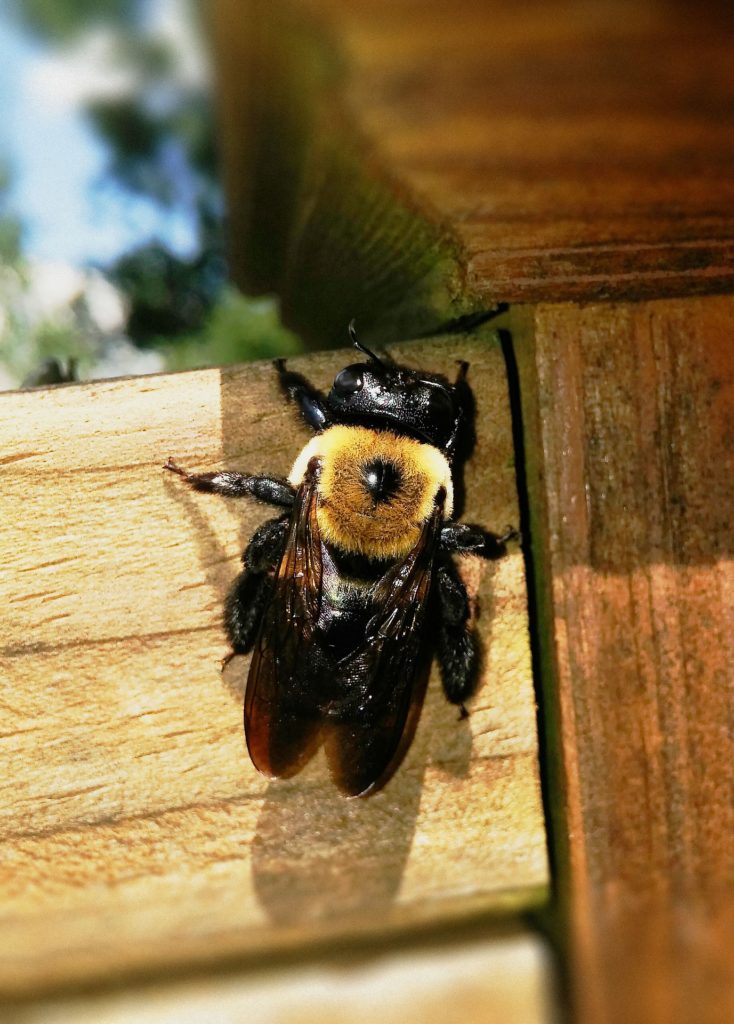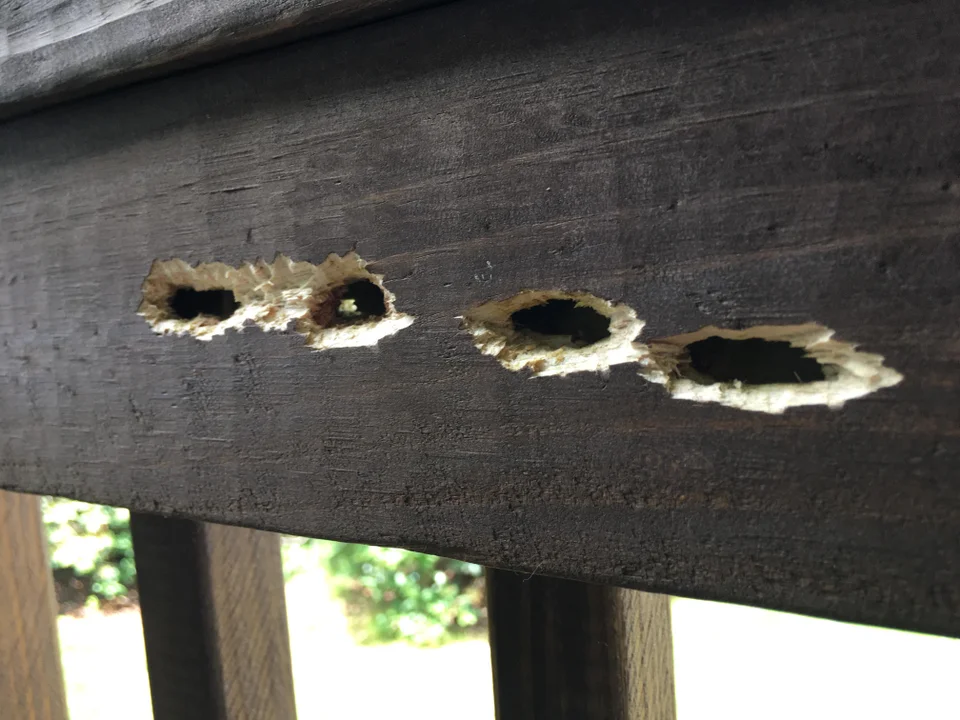
People frequently call us asking about large black bees flying around the outside of their homes in the spring, often describing them as “bumblebees that are digging holes in their house”. These are most likely carpenter bees, which get their name from their habit of drilling holes in wood to nest and raise their young. Carpenter bees prefer softer woods like redwood, cedar, cypress, and pine that haven’t been painted or sealed, and the entry holes are most commonly on the bottom of a soffit, eave, deck railing, etc.
Carpenter bees or bumblebees?
Carpenter bees resemble bumblebees but are slightly different in that they have a shiny hairless abdomen, while bumblebees have a hairy abdomen with black and yellow stripes. Bumblebees and carpenter bees have also have different nesting habits: bumblebees deposit their eggs in an existing cavity, often underground, while carpenter bees lay their eggs in wood.
Biology and Habits
Carpenter bees do not live in colonies like honeybees or bumblebees, they overwinter individually, and those that survive the winter emerge and mate the following spring. Fertilized female carpenter bees then bore into wood, making a nearly perfectly round tunnel that is about 3/8” in diameter to lay their eggs in. Coarse sawdust may be present below the opening, and tunneling sounds are sometimes heard within the wood. After tunneling in a short distance, the bee makes a right angle turn and continues to tunnel parallel to the wood surface. Inside the tunnel, about five or six cells are constructed, each housing an individual egg. The bee then fills each cell with pollen gathered from spring-flowering plants, then seals each chamber with regurgitated wood pulp, working backwards until each cell is constructed and sealed.
The pollen then serves as a food source for the growing larvae during the hatching and maturation process, which takes several weeks. The fresh generation of adult bees emerges later in the summer and forage on flowers before hibernating in wood in the fall.
Nuisance and Damage
Carpenter bees, while not as destructive as termites, can certainly cause both cosmetic and structural damage. When looking for a place to lay their eggs, female carpenter bees dig new tunnels in wood or enlarge and utilize old ones. Additionally, if larvae is left to develop in these cavities, woodpeckers frequently attack these tunnels hoping for a delicious meal of carpenter bee larvae (yuck!!).

While carpenter bees are less likely to sting than other wasps and bees, their presence can certainly be intimidating, particularly during spring mating and nest building when they’re buzzing around and, literally, falling out of holes onto whatever heads are below.
Control and Prevention
Carpenter bees usually won’t tunnel into painted or stained wood, so painting areas commonly targeted by carpenter bees is one way to minimize their presence and damage. Carpenter bee traps can be effective, but will only catch those looking for nesting sites, not those who’ve already nested elsewhere.
Treating the areas broadly with a residual insecticide is both largely ineffective and not recommended as carpenter bees are important pollinators. Remember, they aren’t ‘eating’ or ‘ingesting’ the wood, so it’s unlikely that insecticides will maintain efficacy beyond a few days post-treatment. The most effective treatment is to address the larvae and nests, eventually breaking the cycle of them re-appearing year after year.
Call Preferred Pest Solutions at (864)638-1044 today for a treatment program tailored to your specific needs and break the cycle of carpenter bees returning year after year once and for all….
